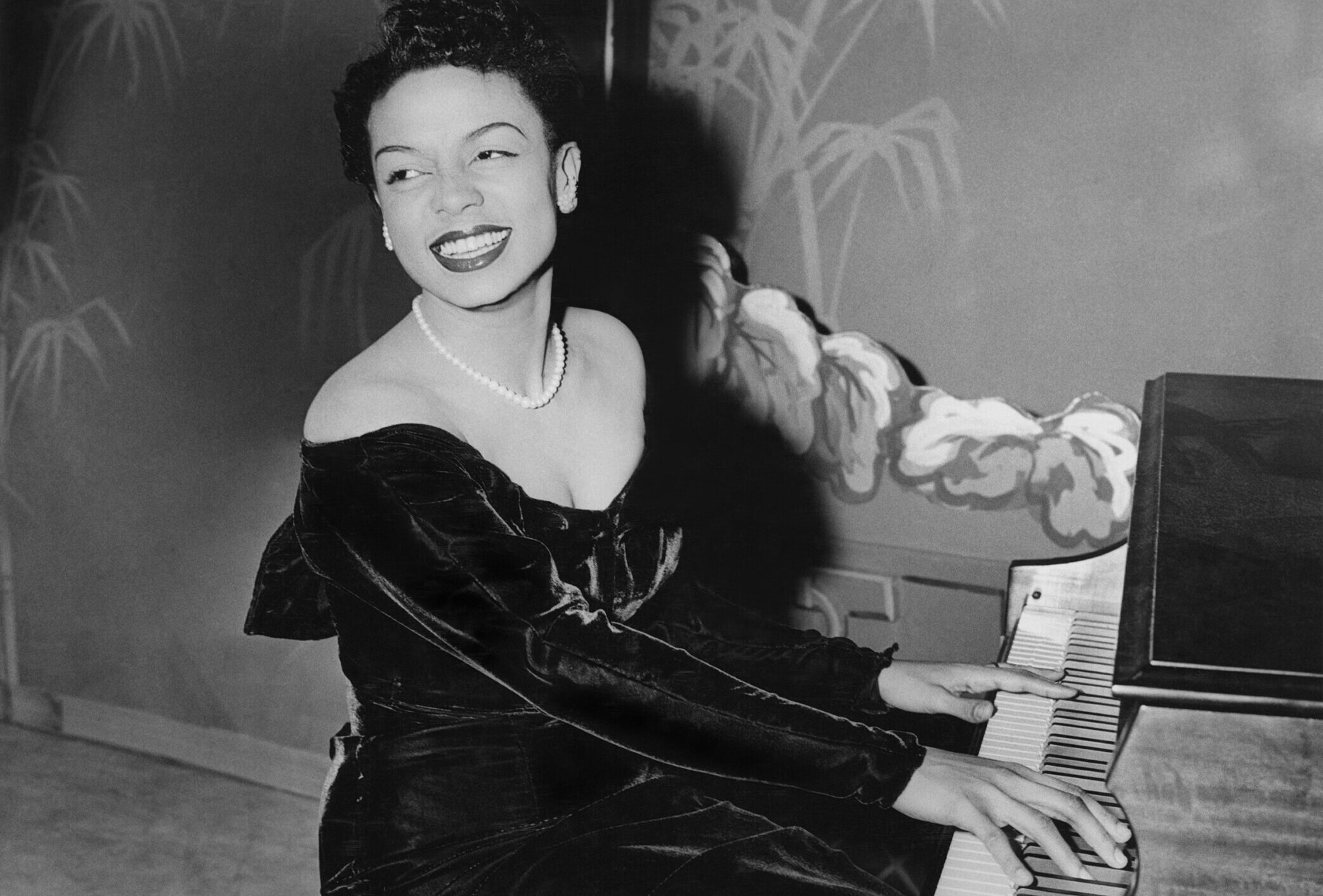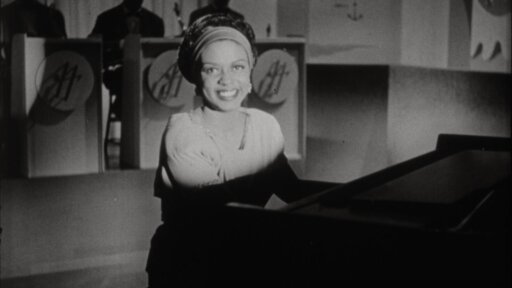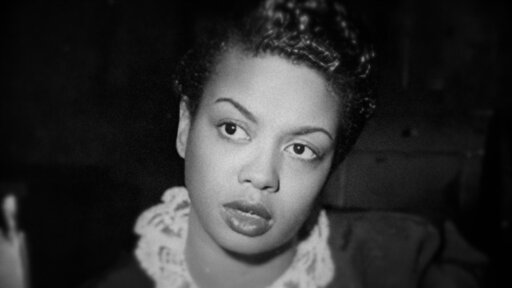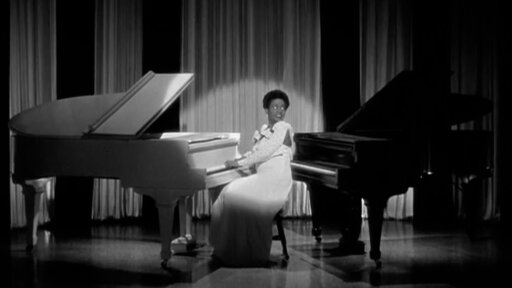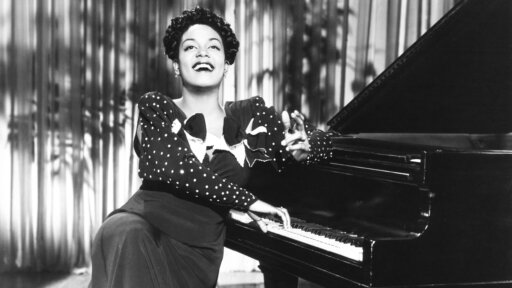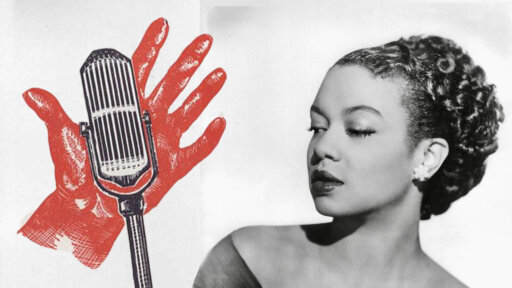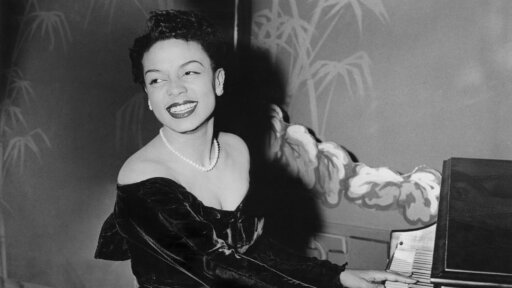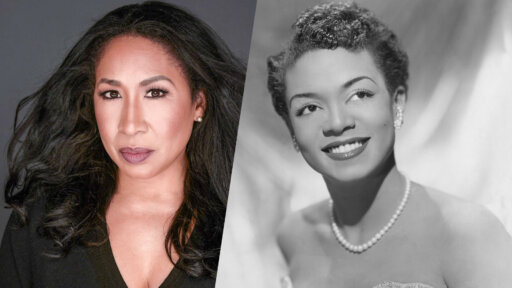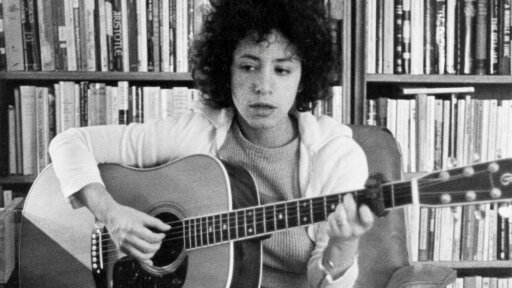Poet and cultural critic Hanif Abdurraqib writes about Hazel Scott’s forgotten legacy, revealing how “the immense love she had for her people” came at a great cost.
One of the sounds I love most, in the history of sounds, the sound I might share with you if you were beside me now, even if you were to insist that you’ve heard it before, while I would protest that one cannot hear it enough, is the sound of Hazel Scott playing “Lament,” a tune on which she is backed by both Max Roach and Charles Mingus, though, with immense gratitude for their extraordinary efforts, I would say that the miracle of the song, the sound from which my affections spring forth, is Hazel Scott.
Who, at least on this moment, seems to be tiptoeing along the piano gently, as if she doesn’t want to upset the order of a stable universe with the ache and moan of the piano. Every note carries a different kind of emotional heft to it, and they all arrive slowly, and linger for a touch before fading. It’s my kinda tune, to make it plain, and Hazel Scott was my kinda piano player. A player who understood the instrument as a vessel for poetics, by which I mean it can function as a writing instrument, by which I mean the best players can utilize it to craft an elegy or an ode as effectively as they can use it to craft a swinging free verse improvisation.
Take, for example, the video of Scott taking on Chopin’s “Minute Waltz,” sitting at a grand piano in a yellow dress, feathered along its collar and sleeves, rolling her head back and forth with delight while her fingers look as though they are barely touching the keys, but instead, drifting back and forth along them at a torrential pace that seems as though it shouldn’t even be able to produce coherent sound, and yet! As the song goes on, the pace quickens, and the sound sharpens! It’s a full swinging symphony that doesn’t even need the horns and drums that arrive right on time, out of the shadows, but we’ll take them! Scott isn’t even glancing at the keys for a moment, and her left hand is dancing perfectly back and forth, landing right where it needs to be, every time. It’s mesmerizing, the kind of performance I watch over and over again and mumble this doesn’t feel like it should be possible to myself, while coming to terms with the reality that for Hazel Scott, this was just another night in front of the instrument.
Hazel Scott could play anything, but would not, herself, be played. Not for a fool, not by this country. A great musical and historical tragedy is the tragedy of how Hazel Scott is not properly and adequately remembered for her immense gifts, but even greater than that, the immense love she had for her people, which came at a great cost. Scott’s refusal to tour in segregated venues was an act of love.
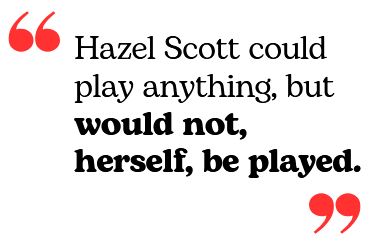 To say to white audiences “if you cannot sit next to someone who looks like me, you do not gain access to my art” is an act of love for her people. And her love for her people lost her bookings, lost her a reputation, had her thrust in front of the House Un-American Activities Committee in 1950 during the Red Scare, and pushed her to a nervous breakdown in 1951, before she got out, found herself in Paris where she worked, recording a run of albums, appearing in films and on stages, and supporting the Civil Rights movement from afar, marching with other Black Americans who had left the country for Paris in support of the March On Washington.
To say to white audiences “if you cannot sit next to someone who looks like me, you do not gain access to my art” is an act of love for her people. And her love for her people lost her bookings, lost her a reputation, had her thrust in front of the House Un-American Activities Committee in 1950 during the Red Scare, and pushed her to a nervous breakdown in 1951, before she got out, found herself in Paris where she worked, recording a run of albums, appearing in films and on stages, and supporting the Civil Rights movement from afar, marching with other Black Americans who had left the country for Paris in support of the March On Washington.
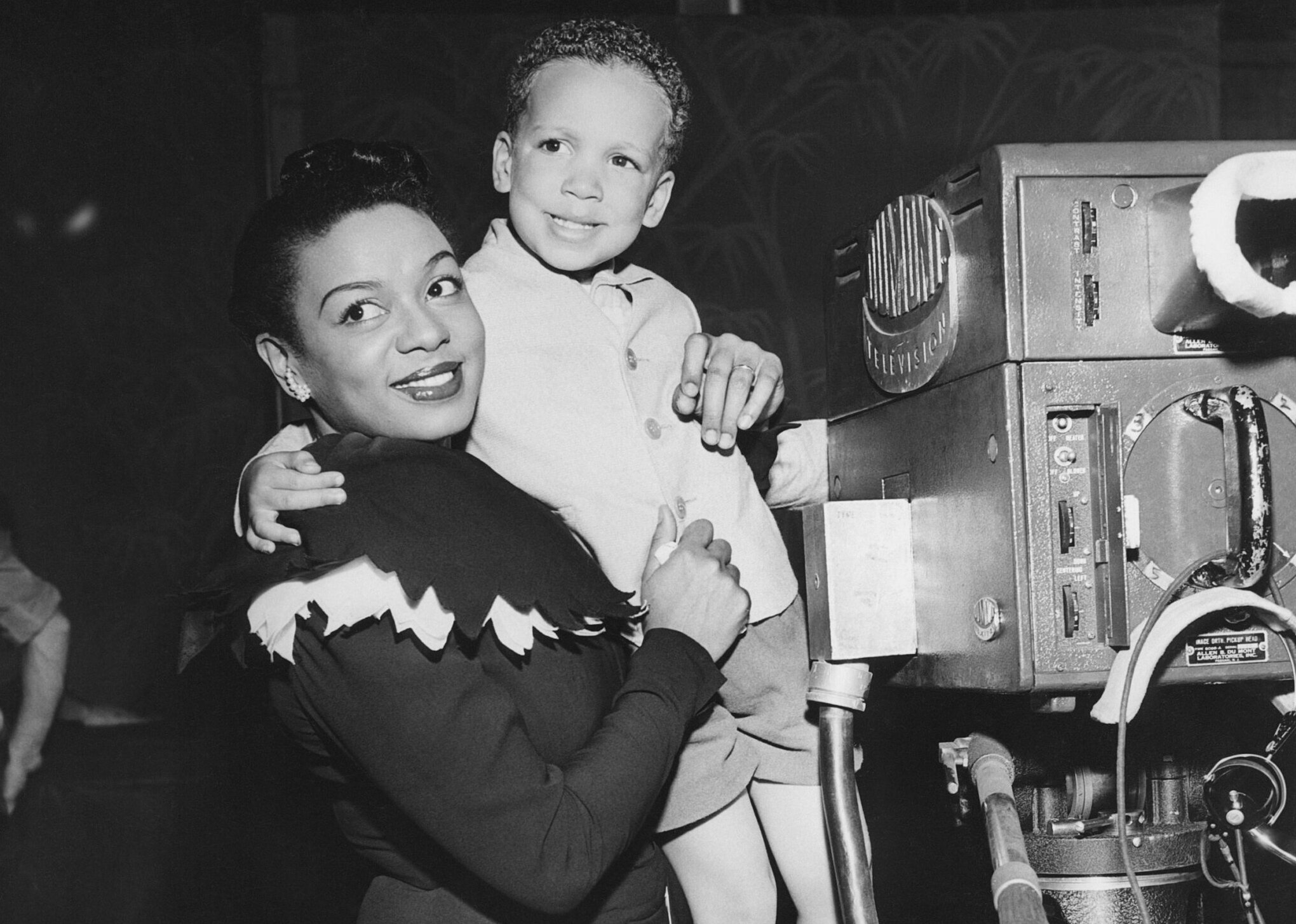
THE HAZEL SCOTT SHOW, From left: Hazel Scott (host), son Adam Clayton Powell III (aka Skipper), 1950. / courtesy Everett Collection.
Hazel Scott is among a group of brilliant Black artists who saw the country for what it was and then got out, went to go do their work elsewhere because she couldn’t survive here, or, at least, couldn’t survive in a way that honored her singular talent and allowed it to flourish. The country, very literally, drove Scott to a temporary bout with madness before she finally left. For a Black woman that gifted, fighting segregation at that time, this country was meant to swallow her up. So that no one would know her name. Which devastates me.
It breaks my heart to scroll to the comment section on any Hazel Scott video, but let’s say the most iconic Hazel Scott video. The one from the 1943 film “The Heat’s On,” the Hazel Scott clip you’ve seen even if you maybe don’t know who Hazel Scott is. Her, back to the camera, white gown with a deep v-cut, playing two grand pianos at once. And people, in the comments, lamenting the fact that this virtuoso, this once-in-two-lifetimes phenomenon, isn’t known by the general public, doesn’t have her name in lights.
And this is the problem of legacy, I think. You can only show the world so much of who you are for so long, and then you’re gone. And it isn’t much up to you anymore how you’re remembered if it doesn’t serve the tellers of the story. Hazel Scott has always deserved better tellers of the story, and I’m glad that I’m living long enough to see the ground being repeatedly broken on that work. For what she’s given, I don’t know if there is anything that would count as enough, but there’s bound to be some beauty in the attempts.
The views and opinions expressed in this article are those of the writer.

